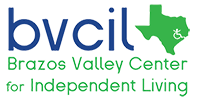Heads up, everybody! There is a new scam afoot that could do great harm to people with disabilities who have diabetes and receive Medicare.
What’s Going On?
Companies that provide Medicare-approved diabetic testing supplies also often sell other types of durable medical equipment (DME). Some of these companies, and/or their partners who have access to our information, are submitting bogus requests for DME that we did not ask for to our doctors and other health care providers. If the doctor approves the request, then these unethical businesses bill Medicare for the cost of the equipment, but we never actually get it–because we didn’t ask for it in the first place!
What’s the Immediate Concern?
This unfair and illegal business practice could be especially harmful to Medicare recipients with diabetes who have other disabilities. Because some DME items like power wheelchairs and adjustable beds are very expensive, Medicare will only pay for one such item every few years. Power wheelchairs, for example, are one every five years. So if Medicare gets a bogus bill for a power wheelchair in your name–and then in a couple of years you really do need that equipment–you will not be able to receive it because Medicare’s records will show that they already paid for one.
How Can We Protect Ourselves and Our Loved Ones?
Our doctors, who must sign off on DME requests, will usually do their best to weed out these bogus requests. But, as we all know, clinics and doctor’s offices can get really busy, especially around the holidays. The crooks are hoping that, because they are so busy, our doctors will just sign the necessary forms without seeing us face-to-face as Medicare requires. Unfortunately, sometimes this does happen.
We can protect ourselves and those for whom we advocate in two ways:
1. If you get a call from your doctor’s office about a request for DME, don’t ignore the message just because you know you didn’t need or ask for anything. Call or see your doctor to clear up the matter and prevent the fraudulent paperwork from going through.
2. Every three months, every Medicare recipient gets a report in the mail from CMS, or the Center for Medicare and Medicaid Services. This document is a printout from the government’s end showing all expenses billed to Medicare during the previous 90 days. Don’t just toss these reports in a drawer! Look over them very carefully to make sure you actually both requested and received every instance of care and/or item of DME shown. If you see something you know you did not request or receive, call 1-800-MEDICARE and report the item(s).
This type of fraud hurts all Medicare recipients because it depletes funds for everybody. Be sure to stand up for your rights.
Where Can I Get Extra Help?
If you have questions about this scam, your CMS report, or other Medicare issue, you can always call 1-800-MEDICARE. If you would like more personalized attention of help contacting Medicare, BVCIL has a Benefits Counselor on staff. Just call (979) 776-5505 for an appointment.
Where Did This Information Come From?
The alert about this scam came from a local clinic which received a flood of bogus DME requests. Clinic staff noticed that the requests were overwhelmingly for Medicare patients with diabetes and were coming from companies known to provide Medicare-approved diabetic testing supplies. When called, many patients reported not needing, never asking for, or already having the equipment in question.











